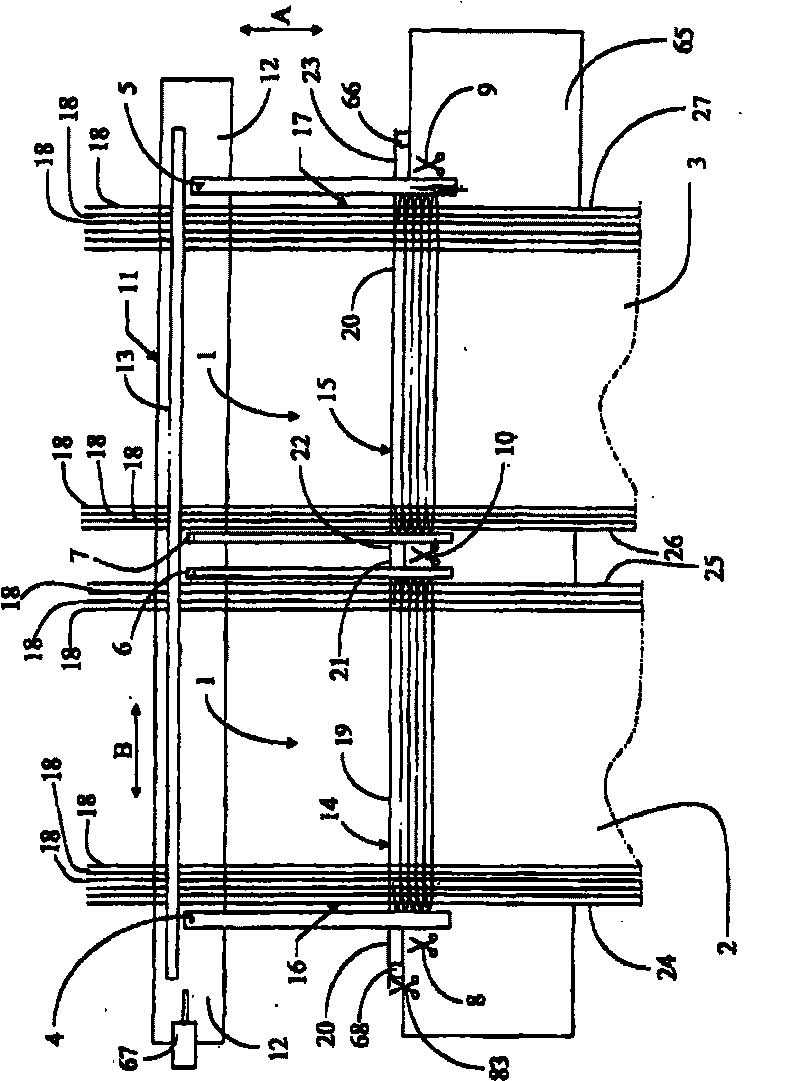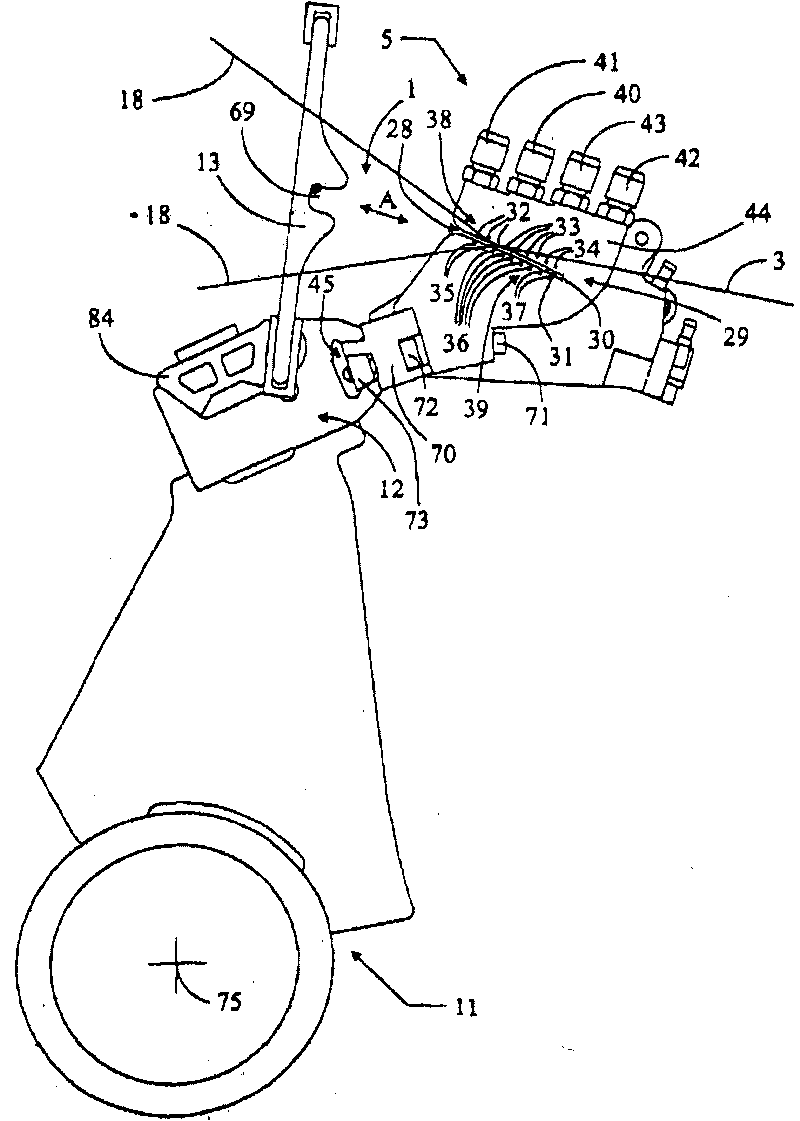Method for tucking an end of a weft thread into a selvedge of a fabric, and pneumatic tuck-in device
A fabric and weft thread technology, applied in the field of pneumatic folding devices, can solve problems such as the complexity of driving equipment
- Summary
- Abstract
- Description
- Claims
- Application Information
AI Technical Summary
Problems solved by technology
Method used
Image
Examples
Embodiment Construction
[0026] exist figure 1 In the loom shown, two pieces of fabric 2, 3 are woven next to each other. The figure shows four pneumatic tuck-in devices 4 to 7 according to the invention, more specifically one tuck-in device 4 is arranged near the insertion side 16 of the shed 1 and one tuck-in device 5 is arranged at the shed 1 Near the opposite side 17 of , the two tuck-in devices 6 and 7 are arranged between the fabrics 2, 3 adjacent to each other. A cutting device 8 is added to the tuck-in device 4 , a cutting device 9 is added to the tuck-in device 5 and a common cutting device 10 is added to the tuck-in devices 6 and 7 . The weaving machine also comprises a sley 11 comprising a sley profile 12 to which a reed 13 is attached. In this case, the tuck-in devices 4 to 7 are attached to the sley profile 12 . In this case, the cutting devices 8 to 10 are also attached to the sley profile 12 . In order to allow the insertion of weft threads, the shed 1 is formed in a known manner us...
PUM
 Login to View More
Login to View More Abstract
Description
Claims
Application Information
 Login to View More
Login to View More - R&D
- Intellectual Property
- Life Sciences
- Materials
- Tech Scout
- Unparalleled Data Quality
- Higher Quality Content
- 60% Fewer Hallucinations
Browse by: Latest US Patents, China's latest patents, Technical Efficacy Thesaurus, Application Domain, Technology Topic, Popular Technical Reports.
© 2025 PatSnap. All rights reserved.Legal|Privacy policy|Modern Slavery Act Transparency Statement|Sitemap|About US| Contact US: help@patsnap.com



